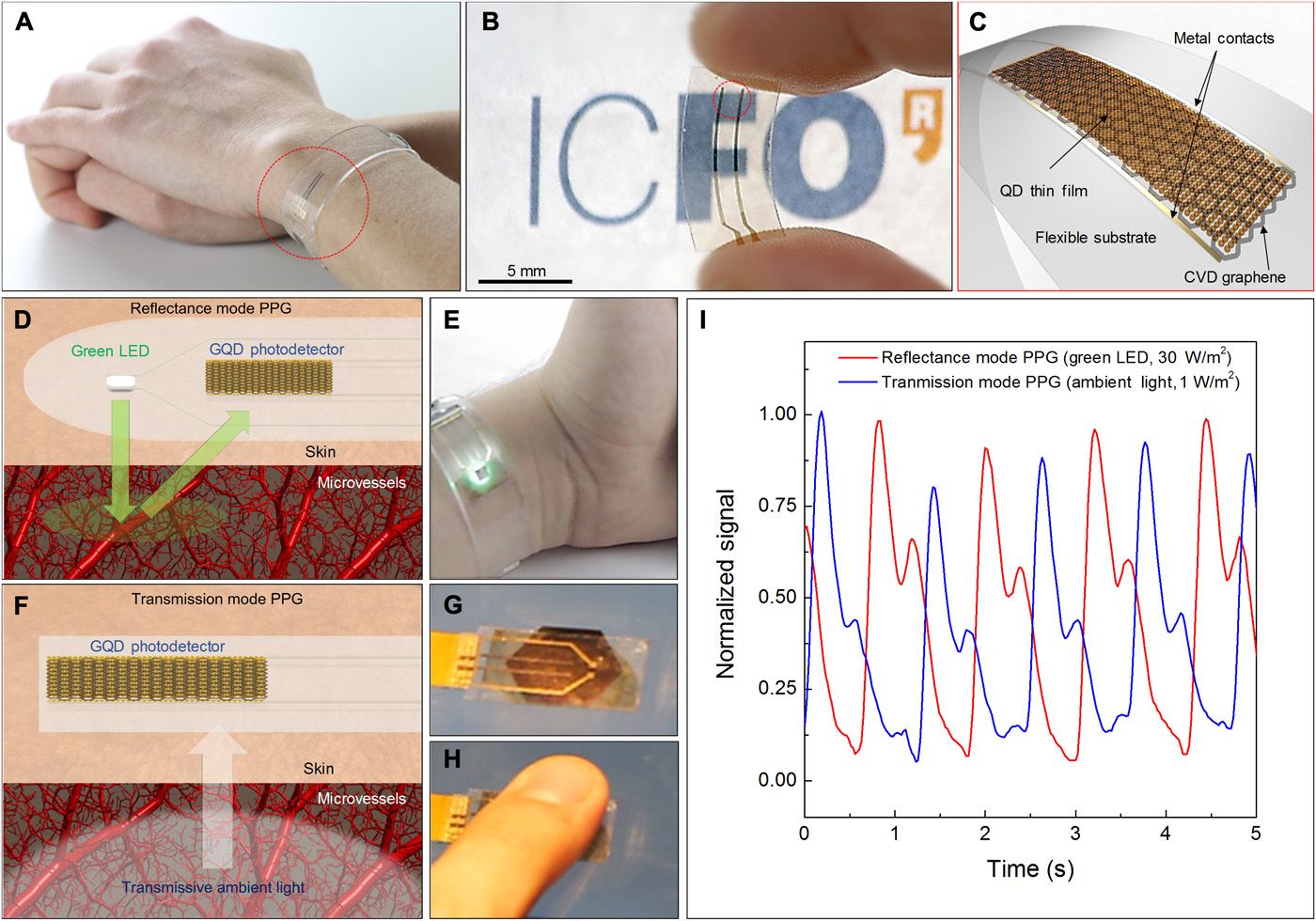Clear, Flexible Vital Sign Wearable Monitors
Wearable health monitors are gaining in popularity, both for fitness tracking and for gathering more targeted health data relating to heart disease and other issues. Researchers from the Institute of Photonic Sciences (IFCO) recently reported on their creation of a new kind of clear, flexible and battery-free device. It can measure respiration rate, heart rate and blood pulse oxygenation, along with exposure to the sun’s UV rays.
"It was very important for us to demonstrate the wide range of potential applications for our advanced light-sensing technology through the creation of various prototypes, including the flexible and transparent bracelet, the health patch integrated on a mobile phone and the UV monitoring patch for sun exposure. They have shown to be versatile and efficient due to these unique features,” Dr. Emre Ozan Polat, first author of the report, said, according to EurekAlert.
A wearable wrist device sends its data to a mobile phone app via Bluetooth and charges wirelessly via phone. The team also created two related patches -- one integrates into a mobile phone screen to read vital signals from a finger touch, and one can be worn on the skin or clothing to track radiation levels from the sun.
These innovations use two nanomaterials: graphene, a see-through, flexible substance made of a one-atom-thick layer of carbon atoms, and a layer of quantum dots that absorbs light. Quantum dots are artificial, minuscule semiconductor particles (a few nanometres in size). A quantum dot has unique electronic and optical properties determined by its size, “shape, composition and structure, for instance, if it's solid or hollow,” Nanowerk.com states.
Prof. Frank Koppens, leader of the Quantum Nano-Optoelectronics group at ICFO, said "this flexible wearable platform is compatible with scalable fabrication processes, proving mass-production of low-cost devices is within reach in the near future."
Learn more by reading, “Flexible graphene photodetectors for wearable fitness monitoring,” in Science Advances.
Article sources: EurekAlert, Nanowerk.com, Science Advances










